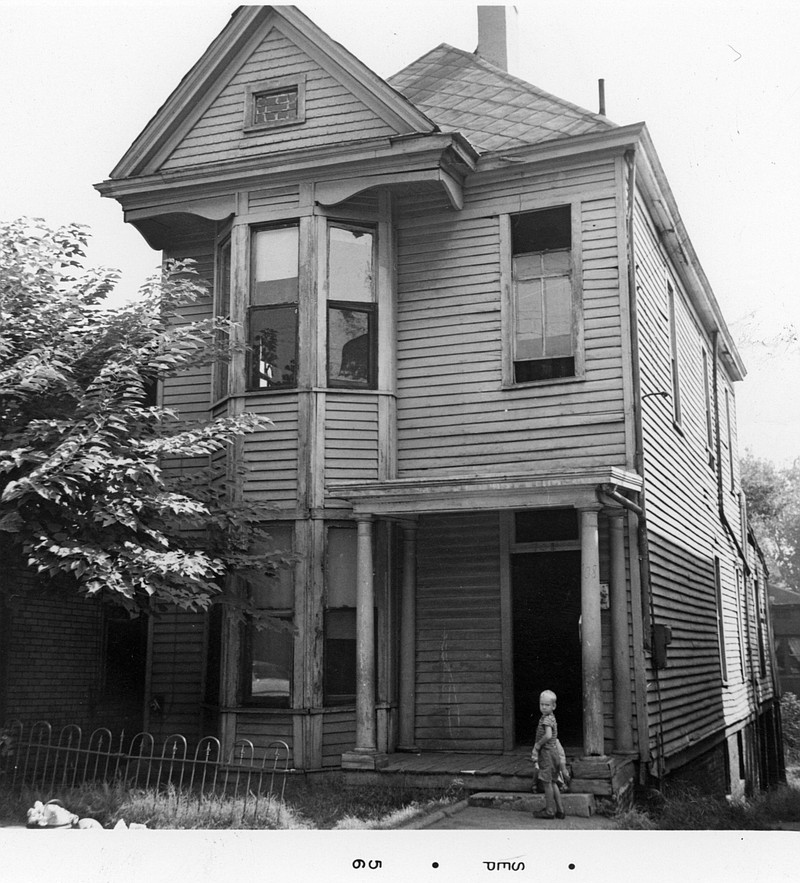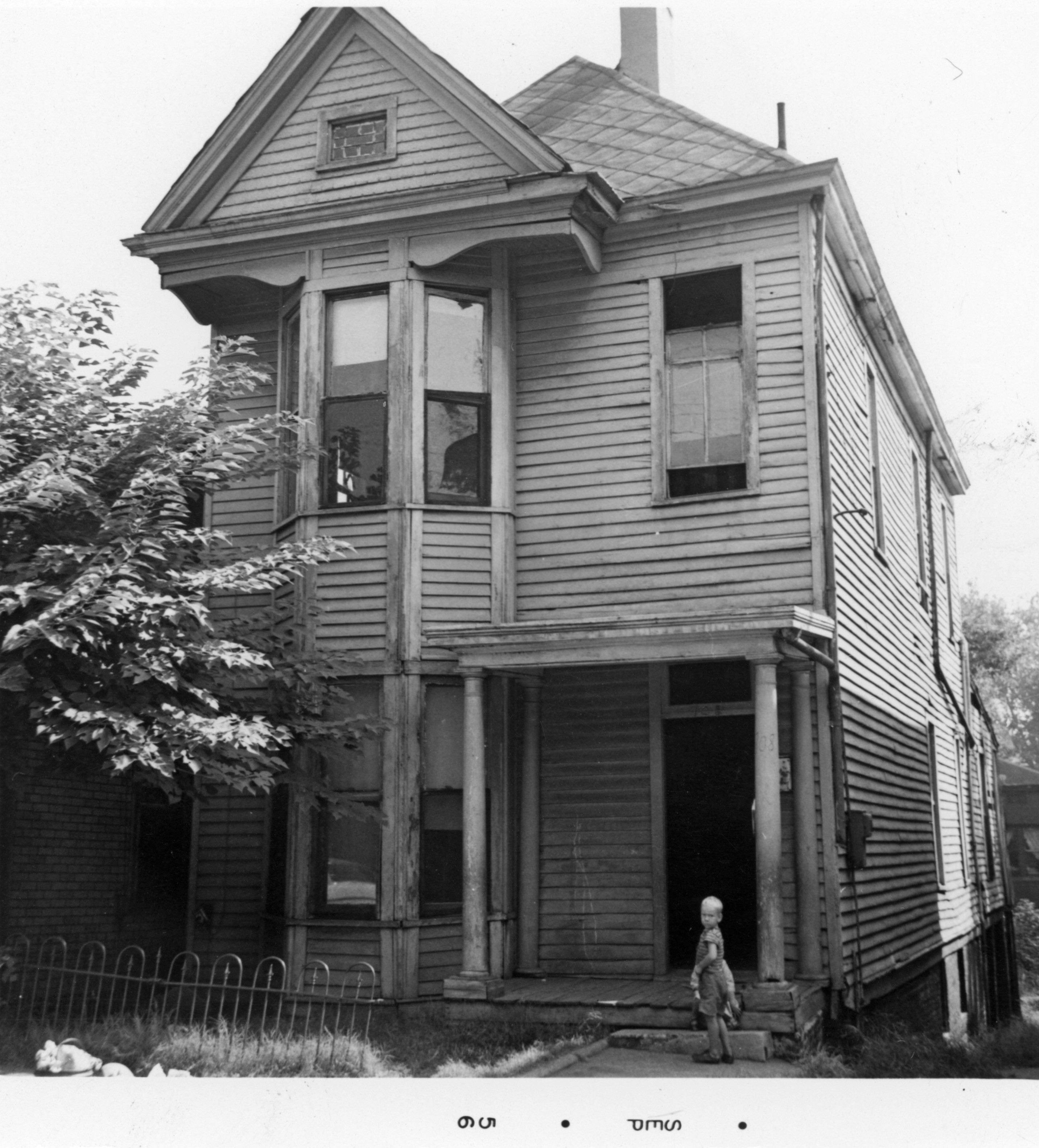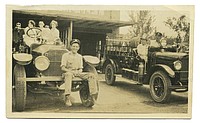A newly discovered batch of historic photos shows the once-proud homes of Cameron Hill before the west-side neighborhood was flattened by progress in the late 1950s.
At the beginning of the 20th century, Cameron Hill was one of the toniest addresses in Chattanooga, a bastion of high society populated in large part by transplanted Northern families after the Civil War.
By the late 1950s, though, it was crumbling. It was subsequently wiped away to make way for urban renewal and highway construction here in the late 1950s and early 1960s.
What happened? Well, two world wars and the Great Depression put urban progress on pause in the first half of the 20th century.
By the 1950s about 70 percent of the houses in Cameron Hill, many of them built during the Victorian era, had been deemed sub-standard, and some were literally caving in.
The ones that hadn't been abandoned were carved up into low-rent apartments. On top of that, the city needed the land to make sure that emerging interstate highways didn't circumvent Chattanooga, which had been the original plan.
By the mid-1950s, Cameron Hill was a far cry from the splendor recalled in this history article published in the Chattanooga Daily Times in 1959: "In the driveways that once clattered to the sound of carriages bringing the great ladies of the city to receptions, there is today the dull sound of falling bricks and crumbling walls.
"In the gardens where white-gloved ladies and wealthy young men made their formal way into courtship, tall weeds grow among the once-proud colonnades."
Sam Hall, curator of ChattanoogaHistory.com, says a collection of photos taken in the years before Cameron Hill was literally leveled (150 feet of altitude was excavated off the top) was recently loaned to his website for preservation. Hall said the photos, which were used for property appraisals, are dated 1956-58.
"The photos were taken by Pat St. Charles Jr., [and] loaned to me by his son, Tony St. Charles," Hall said. "To my knowledge there is nothing online covering this time period with such photographic details."
The destruction of Cameron Hill was somewhat controversial in the 1950s, especially among those who remembered its heyday.
A brief history of Cameron Hill by history author Gay Moore was published in the Times Free Press in 2017. Native Americans once used the hill as a observation point, Moore writes, and in 1838, Lookout Mountain businessman James Whiteside built a home there. Later, Whiteside recruited Philadelphia artist James Cameron to move to Chattanooga and eventually gave Cameron a hill property and named it after him.
(In an interesting footnote, James Cameron died in 1882 in Oakland, California, after his wife accidentally gave him a dose of cabolic acid thinking it was medicine, according to a report in the Wilmington (N.C.) Morning Star.)
More Info
ChattanoogaHistory.comLaunched by history enthusiast Sam Hall in 2014, ChattanoogaHistory.com is maintained to present historical images in the highest resolution available.If you have photo negatives, glass plate negatives, or original non-digital prints taken in the Chattanooga area, contact Sam Hall for information on how they may qualify to be digitized and preserved at no charge.
During the Civil War, Cameron Hill was the site of a Confederate fort. By the end of the 19th century developers had gobbled up the acerage and built an incline railway, a casino and a beer garden - a plan that sounds oddly like a blueprint for 21st century tourism.
"By the early 20th century, Cameron Hill was a jewel in the heart of Chattanooga," Moore wrote, "an elegant neighborhood with a lovely park."
Many of the first residents of Cameron Hill were Northerners who located here after the Civil War, history notes. Some of the larger houses contained 15 to 25 rooms. "Classical, Gothic, and Renaissance architecture were joined by a profusion of carvings and curly-cues," according to a report in the Chattanooga Daily Times.
Opponents of the tear-downs were perhaps remembering this romantic version of Cameron Hill, not the decaying neighborhood of the 1950s.
"Cameron Hill's story would be embellished and romanticized in the decades that would follow," Hall says in a new section of his website dedicated to the St. Charles photos.
"Some are quick to judge the city's leaders' actions as being hostile to historic landmarks, or racially motivated. However, the once-beautiful homes had slowly developed into cheap apartments. Black community leaders and proponents of historical preservation alike supported the goals of the [urban renewal] project."
By the time of the leveling, the Cameron Hill population had become majory Black.
Today, Cameron Hill is known as the home of the headquarters of BlueCross BlueShield of Tennessee, which occupied a complex built on top of the hill in 2007.
Next week: Remembering the businesses of mid-century Cameron Hill.
Follow the Remember When, Chattanooga? group on Facebook.
Contact Mark Kennedy at mkennedy@timesfreepress.com.


